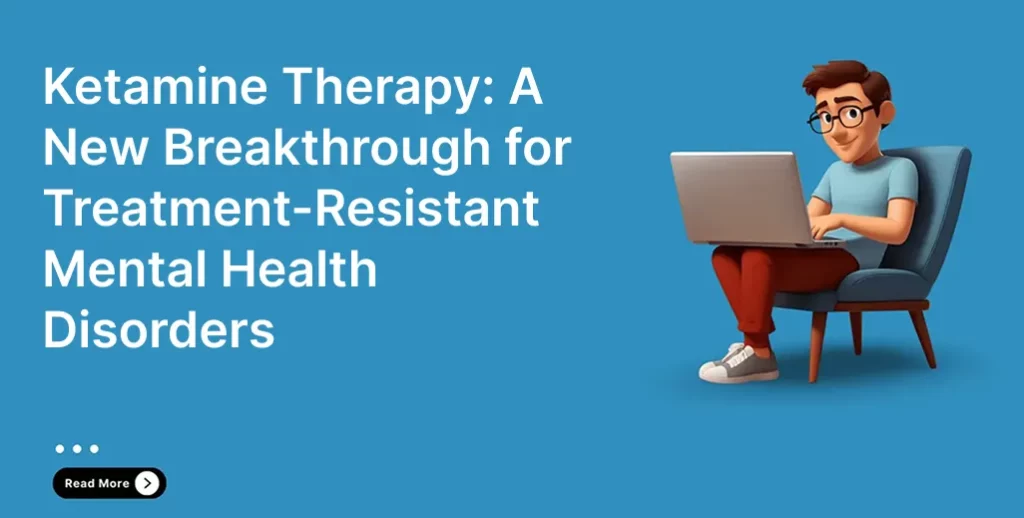If you’re looking for Mediterranean luxury, Marbella’s hard to beat....

For decades, the standard treatment for depression, anxiety, and post-traumatic stress disorder (PTSD) revolved around talk therapy and antidepressants. While these methods have helped many, a significant portion of patients continue to experience persistent symptoms, feeling trapped in cycles of hopelessness despite years of effort.
Recent advances in neuroscience have finally opened the door to new possibilities. Among these, Ketamine therapy has emerged as one of the most promising breakthroughs for individuals struggling with treatment-resistant conditions. This innovative approach is reshaping how clinicians view brain health, offering renewed hope to people who had all but given up on recovery.
Originally developed in the 1960s as an anesthetic, Ketamine has since proven to be a powerful mental health tool. Unlike traditional antidepressants, which target serotonin or dopamine, Ketamine acts on the brain’s glutamate system, one of the most abundant neurotransmitters involved in mood and cognitive function.
By activating glutamate receptors, Ketamine enhances neuroplasticity, the brain’s ability to form new connections and repair damaged pathways. This rapid reconfiguration helps “reset” brain circuits that contribute to depression, anxiety, and other mood disorders. The result is often a noticeable improvement in symptoms within hours or days, rather than the weeks or months associated with conventional medications.
Ketamine treatment sessions are administered in a clinical setting under professional supervision. Most patients receive the treatment intravenously or via nasal spray in a calm, controlled environment designed to ensure comfort and safety.
Sessions typically last about 45 minutes, and many individuals report a profound sense of clarity, emotional release, or renewed perspective afterward. While experiences vary, improvements in mood and motivation often begin to appear after just a few sessions.
The duration and frequency of treatments are tailored to each patient’s needs. Some may require a short series of infusions followed by maintenance sessions over time. Clinical studies have shown that the effects of Ketamine can last for several weeks or months, offering a sustained sense of relief that traditional antidepressants rarely achieve.
Unlike selective serotonin reuptake inhibitors (SSRIs), Ketamine doesn’t rely on altering chemical balances slowly over time. Instead, it jumpstarts healing at the neural level, fostering an immediate improvement in brain communication and response.
This mechanism allows Ketamine to bypass some of the common drawbacks of standard antidepressants, such as delayed efficacy or emotional blunting. For patients who need rapid relief from suicidal ideation or severe depressive episodes, Ketamine’s fast-acting nature can provide a critical lifeline.
As research expands, clinics like Village TMS are now exploring the potential of combining Ketamine with other therapeutic modalities, including TMS therapy (Transcranial Magnetic Stimulation), to further improve recovery outcomes. These complementary approaches represent a multi-dimensional strategy to healing that focuses on both the chemical and structural health of the brain.
While Ketamine works chemically to enhance neuroplasticity, TMS therapy uses targeted magnetic fields to activate regions of the brain linked to mood regulation. This noninvasive method stimulates underactive areas, restoring balance and improving emotional stability.
TMS is often recommended for individuals who haven’t found relief from medications or who prefer a drug-free option. Each session lasts around 20 minutes, and patients can resume normal activities immediately afterward.
The synergy between Ketamine and TMS is particularly promising. By engaging both the biological and electrical systems of the brain, patients often achieve more comprehensive results. This combination highlights the importance of exploring multiple scientifically backed avenues before concluding that recovery isn’t possible.
If you’d like to explore local centers that specialize in these advanced approaches, learn more to find trusted information and resources near you.
Every individual’s mental health journey is unique. What works for one person might not work for another, and that’s exactly why today’s integrative treatments matter so much. Ketamine and TMS offer medical professionals the flexibility to design customized treatment plans based on a patient’s specific condition, history, and goals.
For many, these therapies represent more than medical procedures, they’re stepping stones toward restored confidence, motivation, and stability. To understand how clinics tailor their services to individual needs, consider exploring evidence-based programs that focus on innovation, safety, and compassionate care through new treatment options grounded in neuroscience.
To take a more detailed look at local treatment centers offering innovative care approaches, visit https://village-tms.com/.
If you’re looking for Mediterranean luxury, Marbella’s hard to beat....
The digital landscape evolves quickly, and attention is harder to...
For decades, elevator design and traffic management relied heavily on...
Modern architecture is reaching new heights, literally. As buildings grow...